#california friendly landscape
Text



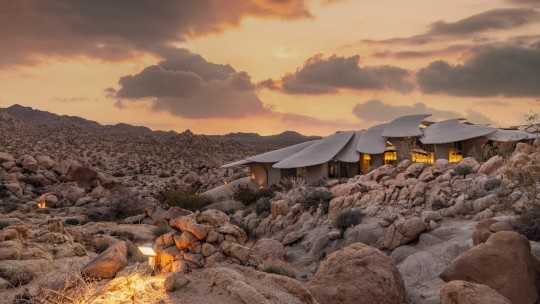
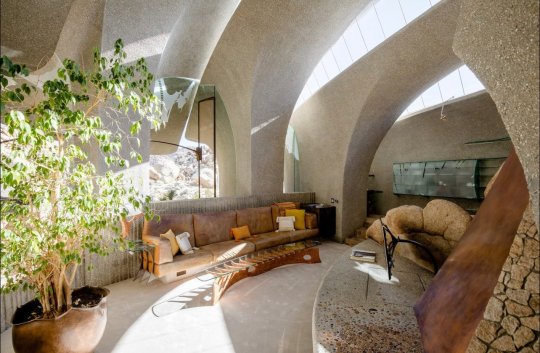
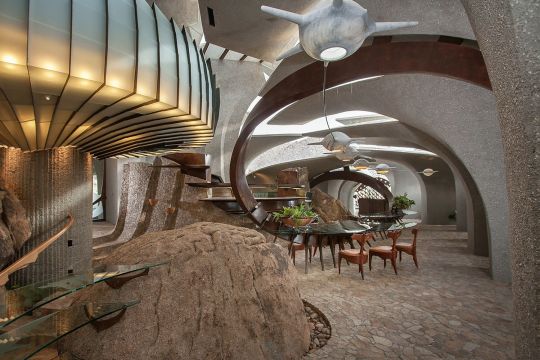


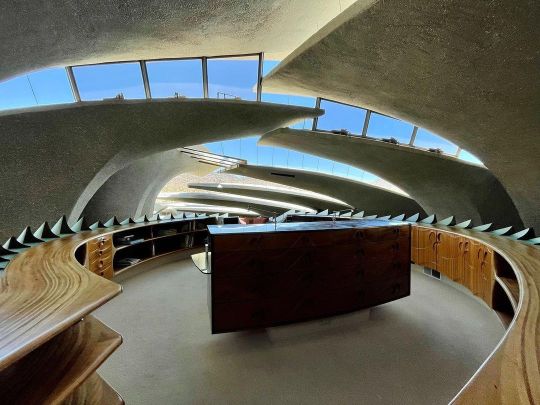



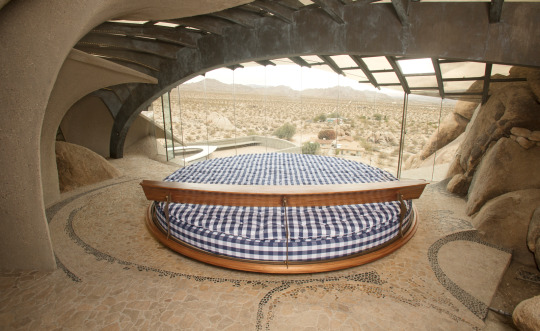


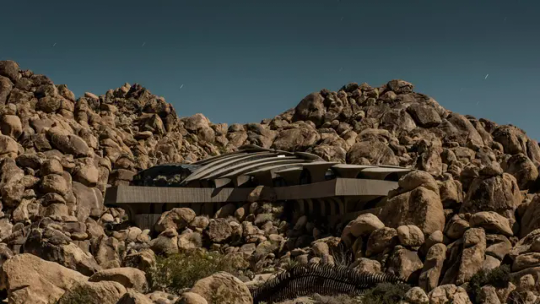



Kendrick Bangs Kellogg (1934 – February 16, 2024)
Kendrick Bangs Kellogg was the pioneer of organic architecture. In the past decades, Kellogg completed over a dozen striking structures (residential and public), each marked with his distinctly curved, irregular, and expressive style. Influenced by his family’s ties to Frederick Law Olmsted, the ‘Father of Landscape Architecture’, Kellogg’s independent architectural journey began after a brief meeting with Frank Lloyd Wright in 1955.
However, unlike Wright and organic architect Bruce Goff, his style explicitly defies categorization, often alluding to a mix of the Sydney Opera House and Stonehenge.
In fact, Kellogg prioritized durability, solidity, and intricacy, a vision reinforced by his collaboration with visionary clients, using high-quality materials like copper and concrete.
Sculpted over 30 years, the Kellogg Doolittle estate in Joshua Tree California is probably the greatest example of organic architecture signed by Kellogg.
Nestled among the rocky terrain of Joshua Tree, California, the house takes the form of an organic object made up of a cluster of sculptural piers. There is an ambiguous relationship between the built space and the extreme landscape as the house navigates between the protruding rock formations. At certain moments, these natural elements pierce through the interior and become sculptural elements of the conditioned space.
#art#design#architecture#minimalism#interiors#sculpture#luxurylifestyle#luxuryhome#luxuryhouse#joshua tree#california#organic#forms#landscape#kendrick bangs kellogg#durability#eco-friendly#kellogg doolitle#rip#iconic#desert home#desert house#retreat
211 notes
·
View notes
Text
Creating a Colorful and Biodiverse Garden: Companion Planting with Firecracker Penstemon
Welcome to our gardening blog, where we explore creative and sustainable ways to enhance the beauty and biodiversity of your outdoor space. Today, we’re excited to delve into the world of companion planting with Penstemon eatonii, commonly known as Firecracker Penstemon. This stunning native plant with its fiery red blooms can bring a burst of color and attract beneficial wildlife to your garden.…
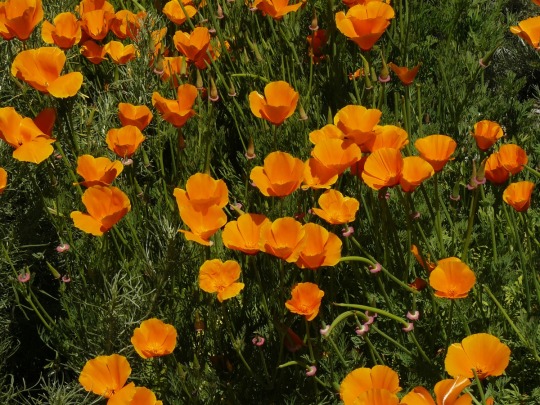
View On WordPress
#Agave Species#Arid Landscape Aesthetics#Blue Palo Verde#Brittlebush#California poppy#Color Coordination in Gardens#Companion Planting#desert gardening#Desert Marigold#Drought-Tolerant Plants#Eco-Friendly Plant Choices#Firecracker Penstemon#Garden Design Ideas#Globe Mallow#Golden Barrel Cactus#Native Desert Plants#Plant Pairings#Purple Sage#Red Yucca#Santa Rita Prickly Pear#Sustainable Gardening#Wildlife Attracting Plants#Xeriscaping
1 note
·
View note
Text
Natural Stone Pavers - Mediterranean Landscape

Inspiration for a mediterranean full sun front yard stone landscaping.
0 notes
Photo

Natural Stone Pavers - Front Yard
Design ideas for a mediterranean full sun front yard stone landscaping.
0 notes
Photo

Mediterranean Landscape in San Francisco
Image of a sizable Mediterranean backyard water feature landscape made of concrete pavers. #california home +design magazine, #kid friendly garden, #chris jacobson, #sustainability, #landscape design woodside
#california home +design magazine#kid friendly garden#chris jacobson#sustainability#landscape design woodside
0 notes
Photo
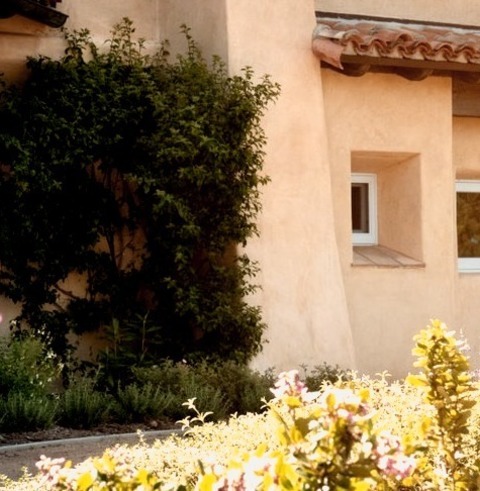
Mediterranean Landscape
Inspiration for a large mediterranean drought-tolerant and full sun backyard decomposed granite garden path.
#sustainable landscape design#firewire landscape design#earth friendly landscape design#water wise landscape#california native plants#water wise landscaping#drought tolerant
0 notes
Photo

Modern Landscape Los Angeles
An example of a small, formal, concrete-paved backyard in the spring can be seen here.
#pergola#synthetic grass#custom patio cover#california friendly lawn#concrete installation#new lawn#full landscape design
0 notes
Photo

Rustic Landscape Los Angeles
Design ideas for a mid-sized rustic drought-tolerant and partial sun front yard mulch landscaping in spring.
0 notes
Photo

Landscape in Santa Barbara
#Design ideas for a mid-sized tropical drought-tolerant and full sun side yard mulch landscaping. tropical landscape#environmentally friendly#retaining walls#colorful landscape design#sustainable landscape design#landscape#california native plants
0 notes
Photo

San Francisco Mediterranean Landscape
#Photo of a huge mediterranean backyard stone water fountain landscape. california home +design magazine#mediterranean climate gardening#landscape#kid friendly#beautiful pools
0 notes
Text
Landscaping design services in Santa Clarita.
The design process is one of a landscaping project's most important yet often overlooked steps. Designing the landscape is the bridge between the conceptual and the installation phase. Contact the "Picture Build" Landscape services provider in Santa Clarita if you want to develop or resign design your yard. Call details:- (818) 751-2690
#Landscaping Santa Clarita#Child-Friendly Landscape#Yard Work Services#Water Feature Backyard#Pavers installation#Landscaping ser#united states#california#Santa Clarita#homestyle#luxury lifestyle#luxury home
0 notes
Text
"Like all bees, honeybees thrive in a biodiverse landscape. But California’s almond industry places them in a monoculture where growers expect the bees to be predictably productive year after year.
Commercial honeybees are considered livestock by the US Department of Agriculture because of the creature’s vital role in food production. But no other class of livestock comes close to the scorched-earth circumstances that commercial honeybees face. More bees die every year in the US than all other fish and animals raised for slaughter combined.
“The high mortality rate creates a sad business model for beekeepers,” says Nate Donley, a senior scientist for the Center for Biological Diversity. “It’s like sending the bees to war. Many don’t come back.”"
...
"Hope is being found in a new certification program that, similar to “organic” or “fair trade” labels, will help consumers choose products that have been made with bee-friendly methods.
The “Bee Better” certification program, launched in 2017 by the not-for-profit Xerces Society, introduces biodiversity into almond groves to naturally control pests and nourish honey bees. Xerces is working with almond growers to plant California wildflowers, mustard and clover in between the rows of trees and native flowering hedges along the perimeter of the orchard – a kind of eco-friendly fence to keep bees in the orchard.
...
“We don’t have pests; we have biodiversity,” says Anderson, who primarily sells directly to individual customers through his Anderson Almonds company. Unlike large industrial almond farms that strip the orchard ground bare to more efficiently treat for insects and fungi, Anderson allows a rich understory to grow, which naturally nourishes the soil and strengthens the trees.
Anderson hires a “beekeeper hobbyist” from northern California every spring to install about 20 hives in his orchard. “We have the opposite of colony collapse at my farm,” says Anderson. “My beekeeper brings weak hives down that he wants to recharge on my property.”"
139 notes
·
View notes
Note
I'm guessing that as a graduate student you have read a zillion and one documents and books and papers and things in your field. Would it be outrageous to ask for recommendations/your favorites? I'm really interested in learning more about the history of Native land use and food systems in the midwest (which I suppose is a very long history, I'd be happy learning about any time period), prairie ecology, and the current outlook for native plants and pollinators (and conservation recommendations). Even one recc for each would be amazing. Feel free to postpone this ask if you're too busy! P.S. can't wait to read your dissertation.
This is a big ask, and I get a lot of these types of asks! In the future it'd be nice if people were more specific about their interests and not asking about general, huge topics. There's a level that you can and should be googling yourself! Many academic papers are online for free through sites like academia.edu and I'm not a search engine!
General answer if you're interested in this range of topics is Robin Wall Kimmerer's Braiding Sweetgrass. She comes from the midwest and writes some on prairie and the book is all about Indigenous science stewardship.
Otherwise, the topics you're asking for don't have one single source that will tell you everything you're looking for. People make small studies of one community, one ecosystem, one plant. Whether it's ecology or ethnobotany, there's no one making compendiums of info, especially not in the midwest. That's why I do the work I do, but even what I do is imperfect. Be suspicious of anyone who/any text that claims to be comprehensive on a huge, complex subjects; they probably are bsing you.
Indigenous Land Mgmt:
Two good recent papers:
The subject of indigenous wild management is more intensely covered in California (M. Kat Anderson) and Vancouver (Nancy J. Turner). Those two authors are great for both nuts and bolts chat and philosophical perspectives about how people have lived in and altered and restored their ecosystems.
A compelling academic book on the subject is Roots of Our Renewal:
Ethnobotany and Cherokee Environmental Governance by Clint Carroll, which is just as much about philosophy, knowledge production and protection and community building, as plants.
Prairie Conservation Practices:
Like I said above, currently published stuff is about very specific interactions and focuses, like a particular pollinator group in a particular plant. What you're looking for, a generalist summary of the field, doesn't really exist.
If you're looking for plant lists and how-tos Tallgrass Restoration Handbook or the Tallgrass Prairie Center Guide. Do not go for Ben Voigt. If you're looking for a general conceptual entry to Midwest conservation/restoration, there's Ecological Restoration in the Midwest
If you're looking for general recommendations for free, Xerces.org is the resource for bee-friendly landscaping and planting.
If you live near a University or Arboretum or Botanic Garden, this is the kind of thing where you should just browse the shelves near the books I've recommended! Chances are you have free access to the libraries, if not the ability to check the books out yourself!
#this is imperfect but it took 40 minutes just to put this together#please be considerate of people's time#long post
198 notes
·
View notes
Text
Legacy (what is a legacy?) Part 16
It’s planting seeds in a garden you never get to see I wrote some notes at the beginning of a song someone will sing for me
Hamilton, the world was wide enough. LMM.
one, two, three, four, Five, six seven, eight, nine, ten, eleven, twelve, thirteen, fourteen, fifteen
Summary: Mike is 13. Born May 2009. Sid didn’t know he had a son. All Mike had was hope and a prayer for his and his half-sister’s safety.
(Sid is a dad of a teen he didn’t know about AU) Sidgeno.
Warnings: (for the total story) post-child abuse (all off-screen but it affects things and is spoken about often), learning how to parent, panic attacks, anxiety, based on the 22-23 season, that said last season when i wrote these tags originally, but hey, it takes me a LONG time to write, so now its no longer last season, OCs?, the realization about sexuality. Post breakups. Desperate lack of in-depth research for CPS in both PA/CA, melodrama?, kidfic, angst, slowburn, playing fast and loose with the law for drama/storytelling purposes
-
Sid and Geno chose to order dinner rather than try to make anything from the kitchen in the same way they sometimes communicated on the ice during a play: simultaneously and with good practice. Of course, that commutation tended to be about power plays, and now Sid should really get to the net so Geno could get the puck to him, but sometimes it's pizza.
One of the Italian places near them made good in-season meals and pizza for the kids. Geno mocked him for not having an app for the place or a food delivery service, but Sid would rather call in and talk to a person instead of ordering from a faceless app.
There was also the fact that until Mike and Marisol came into his life a few weeks ago, he didn't need a kid-friendly delivery service.
All Sid had to do was call in the order, but he had no idea what the kids wanted. How was he supposed to be a good father? After this afternoon, Sid was determined to be the best father he could be.
Some of that had to have played across his face as Geno laughed and told him to go ask. Geno admonished him to remember that he wouldn't be perfect without practice.
Sid knocked on Mike and Marisol's door, looking over the crumpled computer paper that had now decorated the entrance. He hadn't noticed when Marisol was actually drawing, but it appeared a few days ago.
Marisol had drawn a landscape with a sun smiling down on three people on what Sid thought was ice. The ground was blue, at least; it could be water, but the two taller figures had black skates on. The most petite person, whom Sid assumed was Marisol, wore white skates. They were all holding hands, with Marisol in the middle. Sid's person was black and yellow, with what looked like an attempt at an "87" in a childish hand scrawled on the chest. Mike's number was in purple and gold – much like the Kings' old jersey – but Sid wasn't sure of the number. Sid assumed it was his former team's colors.
Marisol opened the door and looked up to meet Sid's eyes. Sid wasn't sure he would ever get over the height difference between him and her—she was so small. Despite her yawning, she was awake.
"Hello Mari, is your brother up?"
She blinked at him and nodded rather than responding verbally. Marisol opened the door fully to show that Mike and Nikita had crashed on Mike's bed. Both of them were curled around each other, and it was adorable. Sid nearly died of adorableness just looking at the two boys. He needed a picture to show Geno and the rest of the team. Anna would be so pleased.
He reached into his pocket for his phone before Helena's warning from a few days before floating back.
"No photos! I don't know you well, Mr. Crosby, but I don't think it will be an issue. However! California and Pennsylvania don't allow minors with contested guardianship to have their images used online. It wouldn't be safe for them."
Sid took his hand out of his pocket, leaving the phone where it was. Anna would have to settle for a story rather than a photo. He would do anything to keep his kids safe, even if it meant he couldn't share all the cute things that his kids did. While unfortunate—he wanted to be like the dads on the team, always with new photos—Sid could do without.
Marisol returned to playing with a set of dolls on the floor, clearly in the middle of some story. Jeff had shown up a few days ago with the dolls, saying his girls didn't want or need them anymore and that they had insisted the dolls go to someone who would love them. Marisol's eyes lit up when she saw the dolls for the first time, so Sid was pretty sure Jeff's girls would be pleased with where they ended up. So Sid had been grateful because he didn't understand what Marisol would like. They hadn't had much chance to get her toys yet. Sid mentally set the next off day to ensure they got stuff for her soon. Nikita's toys were enough for now, but she needed more of her own stuff.
"Can I play?" Sid let the boys sleep momentarily and followed Marisol to the dolls. "How are you feeling?" he asked, settling beside her at her nod.
"Muy cansada." She yawned, with as much of the energy he had come to expect of her post-nap self, "You be Dad. I'm Bluey." She ordered – neither of the dolls in her hands were of the dogs from the cartoon he had heard a lot about from the dads on the team. He didn't know much about Bluey, but Mike had put it on a few times in both English and Spanish, so Sid figured he would know soon.
Sid took a doll from her hand and tried desperately to remember what cansada was in Spanish while ignoring the simple 'you be Dad' felt like. He had just heard it on the TV program they had been watching yesterday morning. Something about sleep? But it was before the character had gone to bed…
Tired. It meant tired. Marisol was tired.
As they played for a bit, Sid gently talked to Marisol, trying to learn more about her feelings and whether she was doing better. It was hard because she kept answering in Spanish, and Sid was sure it was just as disjointed as her English. With Sid's Spanish being… not good, to say the least, it was a bit of a struggle following along. It was better than it was a month ago, but not good. But he kept on trying.
Besides feeling tired, he had to find out what she was experiencing. Once he was reassured that she wasn't upset anymore or had too many immediate emotional reactions to the day, he gently asked, "Do you want pizza for dinner?"
She nodded quickly, dropping her dolls, "Pizza! I want pizza. With pepperoni and cheese!" She was loud enough to wake the boys.
Nikita was the first to move. Still filled with the energy of children, he was not as tired as Marisol. He woke up and nearly vaulted off the bed like Sid had expected Marisol to do.
Mike was a much slower-to-wake-up teenager. "Pizza?" Mike asked, voice thick with sleep but somehow still processing. Food did that to hungry hockey players, especially when they were in their teens. Mike could and probably would, especially after today - both being on the ice for the first time in a while and Marisol's panic attack – finish the entire pie by himself.
Sid nodded, hiding a laugh at the hungry teenager presented before him. "Yeah, Pizza. What do you want?" He should know his kid's pizza order. That's a thing parents know, right?
Mike raddled off an order of toppings that Sid felt needed to write down; he still sounded half asleep. Marisol's order was much easier to remember.
"Hold on," Sid said, reaching for his phone to write it all down. Nikita was already giving him a basic order, saying that Sid had seen Geno eat a time or two in their youth—lots of tomatoes and mushrooms.
Once Nikita was done talking, Mike's brain seemed entirely online, and he immediately backpedaled. "Cheese would be fine," he said, looking away toward Marisol.
Marisol didn't even notice; she and Nikita played with the dolls and talked about pizza.
Sid sighed internally; someday, Mike would allow himself to take up room. "One meat lover with green pepper and jalapenos." He said firmly, using a little of the captain's voice he had for rookies who were nervous for their first games. He tapped the order into his notes app.
Mike looked up, and despite some of the worry and stress still on his face, even after the nap, he smiled. For once, he looked like the teenager he was rather than a lost child.
#'sid has a teen he didn't know about' au#sidgeno#8771#i write?#this will take a while to write#working title: Legacy (what is a legacy?)
12 notes
·
View notes
Text
Are Peonies Poisonous to Cats? A Guide for Cat Owners
If you’re a cat owner with a love for gardening, you may be wondering if your favorite blooms are safe for your furry friend. Peonies (Scientific Name: Paeonis officinalis), with their lush petals and vibrant colors, are a popular choice for many gardens. However, it's essential to know whether these beautiful flowers pose a risk to your cats.

Understanding the Risks
Peonies are indeed toxic to cats. The primary culprit is a toxin called paeonol, which is found in the bark of the peony plant. While peonies are not considered highly toxic, ingestion can still lead to uncomfortable symptoms and potential health issues for your cat.
Signs of Peony Poisoning in Cats
Recognising signs of plant poisoning in cats is imperative for timely intervention. The key symptoms to look out for include:
Increased salivation
Vomiting and diarrhoea
Neurological signs like fitting
Respiratory distress
Subtle indicators might also appear, such as increased thirst or changes in behaviour. These signs require immediate attention, underscoring the seriousness of peonies' impact on feline health.
Symptoms of Peony Poisoning in Cats
If your cat ingests any part of a peony, they may exhibit the following symptoms:
Vomiting: One of the most common signs of plant toxicity, vomiting helps expel the ingested material from your cat's system.
Diarrhea: This can occur as the cat’s digestive system reacts to the toxin.
Lethargy: A lack of energy or unusual tiredness is a sign that your cat’s body is dealing with the toxin.
Drooling: Excessive salivation can be another indicator of plant poisoning.
What to Do if Your Cat Eats a Peony
If you suspect your cat has ingested a peony, it’s essential to act quickly:
Remove Access: Ensure your cat can’t eat any more of the plant.
Contact Your Veterinarian: Provide details about the ingestion and symptoms. They may recommend bringing your cat in for an examination or monitoring symptoms at home.
Follow Veterinary Advice: Your vet might suggest inducing vomiting or administering activated charcoal to prevent further absorption of the toxin. Do not attempt these treatments without professional guidance.
Preventing Peony Poisoning
The best way to protect your cat is to prevent access to peonies and other toxic plants:
Indoor Plants: Keep peonies out of your home or in areas your cat can’t reach.
Outdoor Gardens: Consider fencing off garden areas with peonies or using deterrents to keep your cat away.
Alternative Plants: Opt for cat-safe flowers and plants such as spider plants, Boston ferns, or African violets.
Cat-Safe Alternatives to Peonies
If you love the look of peonies but want to ensure your garden is cat-friendly, consider these safe alternatives:
Roses: With their variety of colors and similar lush appearance, roses are a beautiful and non-toxic option for your garden.
Sunflowers: These bright, cheerful flowers are safe for cats and add a splash of color to any garden.
Zinnias: Easy to grow and available in many colors, zinnias are another cat-safe option that can provide the visual appeal of peonies.
Paeonia officinalis, are commonly grown
Paeonia officinalis, commonly known as the common peony or garden peony, is not native to the United States. It originates from southern Europe and has been cultivated in gardens around the world. However, due to its popularity as an ornamental plant, it can be found growing in various states across the US where it has been planted in gardens and landscaped areas.
While Paeonia officinalis itself is more commonly found in cultivated settings rather than naturalized in the wild, peonies in general, including other species, can be found in many regions across the US. Some states where peonies, including Paeonia officinalis, are commonly grown include:
California
New York
Illinois
Ohio
Michigan
Pennsylvania
Massachusetts
Oregon
Washington
These states have suitable climates for growing peonies, particularly in gardens and cultivated landscapes. However, Paeonia officinalis does not typically grow wild in the US; its presence is mainly due to horticultural activities.
Conclusion
While peonies are a stunning addition to any garden, they pose a risk to our feline friends. By being aware of the symptoms of peony poisoning and taking steps to prevent exposure, you can enjoy a beautiful garden that’s safe for your cats. Always consult your veterinarian if you suspect your cat has ingested a toxic plant and consider cat-safe alternatives to keep your garden both beautiful and pet-friendly.
12 notes
·
View notes
Text
Excerpt from this story from the Center for Biological Diversity:
The California Senate passed a bill today that would require cities and counties to protect wildlife connectivity in their land-use plans. The Room to Roam Act, Assembly Bill 1889, directs local officials to minimize harm to wildlife movement as part of their long-term planning and offers development guidelines such as incorporating wildlife-friendly fencing and lighting.
The bill, which received state Assembly support in May, now awaits the governor’s approval.
“Decades of reckless development decisions have fragmented California landscapes, and wildlife are paying the price,” said J.P. Rose, Urban Wildlands policy director at the Center for Biological Diversity. “If we plan development with care for the natural world, our wild neighbors can have a chance to roam and ultimately thrive.”
Many animals across California are imperiled because poorly planned development has cut into their habitat, leaving them trapped and struggling to survive. Mountain lions, California red-legged frogs, mule deer and many other animals struggle to find food and shelter, and some suffer from harmful inbreeding due to habitat fragmentation.
“California has more threatened and endangered species than any other state,” said Mari Galloway, California director at the Wildlands Network. “AB 1889 is a critical tool to help our biodiversity through bridging the gap between local land-use and wildlife habitat needs.”
The bill, which is co-sponsored by the Center and Wildlands Network, complements the Safe Roads and Wildlife Protection Act, which requires the California Department of Transportation to prioritize wildlife crossing structures when improving or building roads. It also complements the Center-sponsored California Ecosystems Protection Act of 2023 which makes landscapes safer for wildlife by limiting toxic rodenticides. The Room to Roam Act also helps California meet its 30x30 goal to conserve 30% of the state’s lands and waters by 2030.
8 notes
·
View notes